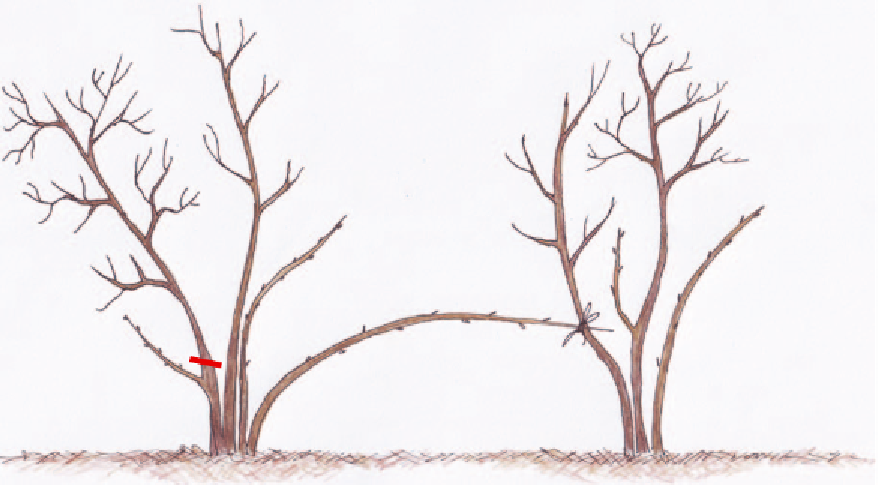Agriculture Reference
In-Depth Information
3
1
3
1
2
2
4
Figure 10.2
Four-year-old stems can be pruned out after harvest. Cut them at their base or back to a strong side growth
(1). Vigorous new stems will carry a crop next season (2) and the year after fruit on new side growths (3). Very vigorous
new growth can be tied down to improve the stem's fruitfulness (4).
growth should be removed to allow light and
air into the canopy, leaving stems that are at
least the width of a pencil. If there is not
much of this growth, cut back the weak stems
by about a third and perhaps review the
amount of nutrition you are supplying.
Blueberries benefit from a good dressing of
rotted manure. Strong new vigorous canes
can be tied down to encourage more fruitful
wood and stop the plant running skywards.
Such vertical stems will produce a mass of
vegetative growth with little fruit so tie the
stem down to its neighbour with soft plant ties
(see Figure 10.2).
green shading near the stem. Gently twist the
fattest and darkest berries from their stem to
avoid tearing the skin. Torn skin equates to a
mouldy berry if it is kept longer than a day.
The fruits in each cluster will ripen at
differing times so pick every other day.
Currants
Ribes
spp.
Currants are not just currants; they can be
red, white or black. Red and white currants
are essentially the same except for their
colour and are pruned in the same manner.
Black currants are treated differently; they
have different fruiting wood, prefer cooler
winters and more water-retentive soil than the
reds and whites, although both require soils
rich in organic matter. All currants are grown
from cuttings and purchasing named
Harvest
Blueberries do not ripen off the bush so
ensure that they are fully ripe before picking.
The berry should be completely blue with no


